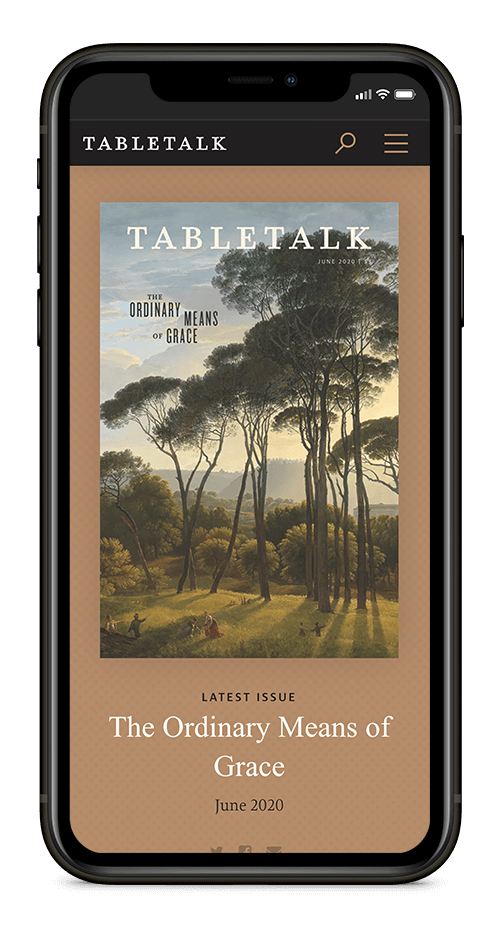
Request your free, three-month trial to Tabletalk magazine. You’ll receive the print issue monthly and gain immediate digital access to decades of archives. This trial is risk-free. No credit card required.
Try Tabletalk NowAlready receive Tabletalk magazine every month?
Verify your email address to gain unlimited access.
Exodus 12:5–7
“Your lamb shall be without blemish, a male a year old. You may take it from the sheep or from the goats, and you shall keep it until the fourteenth day of this month, when the whole assembly of the congregation of Israel shall kill their lambs at twilight” (vv. 5–6).
The Passover meal involved sacrificing and eating a lamb (Ex. 12:8; see also Num. 28:16–25), and the detailed instructions for what kind of lamb to sacrifice are found in Exodus 12:3–6. In selecting a lamb, the Israelite families are first instructed to be careful about the number and size of the lambs that they select. For smaller households, a whole lamb would be more than they could eat in one sitting, so they had to join with others in procuring the animal that multiple households could then share between them (vv. 3–4). The point was to have no leftovers after the Passover meal. Each household needed the exact amount of meat for one meal, no more and no less, because nothing could be allowed to remain until the next day (vv. 8–10).
Next, God tells the Israelites that the lamb that each household offered had to be a year-old male “without blemish” (v. 5). Later, the same requirement of a perfect, blemish-free animal would be prescribed for Israel’s sacrifices, thereby indicating that the Passover sacrifice was a sacrifice to atone for sin (see Lev. 1; 4). We will discuss the idea of the Passover as an atonement more fully in due time, but note that the requirement for an animal free of blemishes had nothing to do with the fitness of the meat for human consumption. As one commentator notes, the meat from a lamb with a minor blemish in its extremities does not taste any different from the meat from a lamb with no blemishes. No, the requirement for a perfect animal is tied to its being used in a sacrifice to God. The perfect Lord demands perfection from His creatures and deserves only perfect gifts (e.g., see Matt. 5:48). Blemish-free animals depicted this truth vividly.
The last verse we are studying today specifies that the blood of the lamb is to be painted on the doorposts and lintel of each Israelite home (Ex. 12:7). As we will see, this was to protect the Israelite families from the death that was about to strike the firstborn of the land of Egypt (v. 13). It would deliver Israel from death, anticipating the blood of Christ, the fulfillment of Passover, that would deliver His people from eternal death (Heb. 2:14–15). The effectiveness of the blood applied to the doors of the Israelites anticipates the greater power of Christ’s blood to finally defeat death altogether. John Chrysostom comments, “If [the blood] had such great power in its types, if death shuddered so much at the figure, how would it not even more so be in terror of the reality of itself, pray tell?”
Coram Deo Living before the face of God
God is perfect and therefore deserves only the best we can give Him. We no longer sacrifice Passover lambs today, but this does not mean that we cannot give Him the best of our time, talents, and treasures. Especially in worship we must seek to give the Lord our very best, to offer praise without blemish.
For Further Study
- Deuteronomy 17:1
- Malachi 1:14
- Hebrews 9:11–14
- 1 Peter 1:17–19